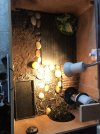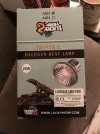Claire walsall
New Member
My Herman will not stop scratching to get out his enclosure. It’s a daily event to find him flipped over with his legs just going crazy. There is no way he could ever flip himself back. He spends so much time climbing the walls. When he sees anyone look in he goes mad to be picked up and let run around the house. I’m so worried that he would be there for hours before I’m home. My enclosure is attached any advise would be appreciated.


